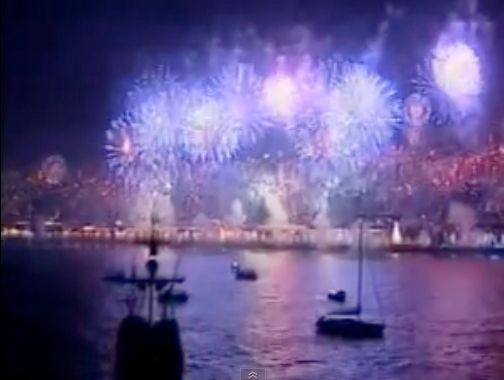5 Fantastic Fireworks Facts

The largest fireworks display on record took place in Madeira, Portugal in December 2006. During the show, 66,326 fireworks went off.
(Image credit: macedospirotecnia; See YouTube video)The Fourth of July and fireworks go together like hamburgers and hot dogs. From flower-like fountains to fancy rockets that explode into heart shapes and smiley faces, pyrotechnics are always getting bigger and brighter.
The U.S imports some $190 million worth of fireworks and makes $231.8 million more each year, according to the U.S. Census Bureau. But what's the story behind these beautiful explosives?
Read on for five things you may not have known about July 4th fireworks.
1. The Founding Fathers were fans
Fireworks have been around since the days of ancient China. But their history in the United States is far-reaching, too. Right after the Declaration of Independence was approved by Congress, John Adams, in 1776, wrote to his wife that America's independence "ought to be solemnized with pomp and parade, with shows, games, sports, guns, bells, bonfires and illuminations, from one end of this continent to the other, from this time forward forever more." Illuminations, of course, meant fireworks.
The only catch was that Adams was two days off on his recommendations of when Independence Day would be celebrated. He predicted a holiday date of July 2, the day a closed session of Congress approved the resolution of independence. Instead, the country went with July 4, the date on the Declaration of Independence. [50 July 4th Facts: All About Patriotism]
2. Chemicals create colors
Sign up for the Live Science daily newsletter now
Get the world’s most fascinating discoveries delivered straight to your inbox.
Ever wondered why some fireworks are blue and others are red? It's all in the chemicals. Copper produces blue sparks, while a mix of salts and other substances make red. Barium yields a green glow, and sodium burns yellow.
3. America doesn't hold the record
Americans' love their fireworks, but the biggest display ever took place in Portugal in December 2006. In 37 launch sites spread across the island of Madeira pyrotechnics experts set off no less than 66,326 individual fireworks. In fact, Madeira snagged a Guinness World Record for the largest fireworks display in the world that year.
4. Playing with fire isn't the safest way to celebrate
As much fun as they are, fireworks are, well, kind of dangerous. In July 2010, the U.S. Consumer Product Safety Commission recorded at least 6,300 fireworks-related injuries. About 1,200 were caused by handheld sparklers, while 400 were the fault of bottle rockets. Hands and fingers were most frequently injured.
5. Fireworks are more fun with math
Just as you see a flash of lightning before you hear the thunder, you'll notice fireworks lighting up the sky before you hear their echoing booms. That's because light travels about a million times faster than sound. Use this knowledge to your advantage to calculate how far you are from the explosions: As soon as you see a flash, count the seconds until the "boom." Divide by three to get the distance between you and the patriotic pyrotechnics in kilometers.
Follow Stephanie Pappas on Twitter @sipappas or LiveScience @livescience. We're also on Facebook & Google+.

Stephanie Pappas is a contributing writer for Live Science, covering topics ranging from geoscience to archaeology to the human brain and behavior. She was previously a senior writer for Live Science but is now a freelancer based in Denver, Colorado, and regularly contributes to Scientific American and The Monitor, the monthly magazine of the American Psychological Association. Stephanie received a bachelor's degree in psychology from the University of South Carolina and a graduate certificate in science communication from the University of California, Santa Cruz.











